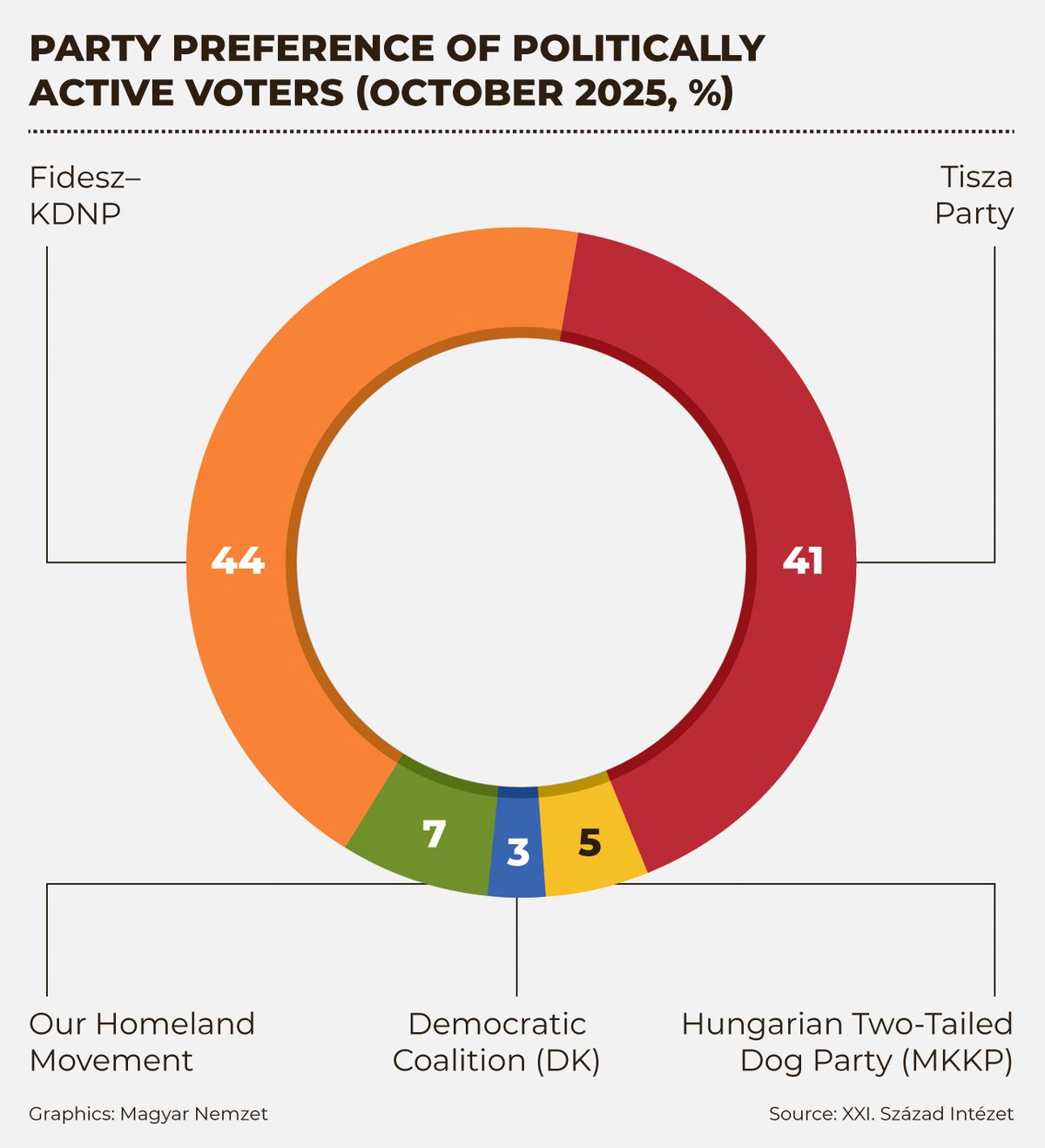With only half a year left until Hungary's parliamentary elections — after a busy summer and a turbulent September — the campaign is entering its final stretch. “From now on, every week and every day will count,” writes the XXI Century Institute in its newest survey.
The institute has decided to launch
a new research series titled “The Transformation in the Structure of Public Life,” under which it will release regular updates until the elections.
“We’re setting our compass here and looking ahead from this point.”
Their debut study focuses on the party race, asking politically active respondents — those who said they would definitely vote if elections were held this Sunday — which party they would support.
Key Findings
The survey shows Fidesz in the lead, with a four-party parliament projected.
The ruling Fidesz Party would gain 44% of the votes among active voters, while 41 % would cast ballots for the Tisza Party. The Our Homeland Movement (Mi Hazank) would rake in 7%, while the Hungarian Two-Tailed Dog Party (MKKP) 5%. The Democratic Coalition (DK) standing at 3% would not clear the parliamentary threshold. This is the current situation six months ahead of the elections.

Methodology
The survey was conducted between October 6–8, 2025, as part of the XXI Century Institute’s research project “The Transformation in the Structure of Public Life.” Sample size of 1,000 respondents, representative of the Hungarian adult population by gender, age, residence, and education. To ensure accuracy, weighting was applied to balance demographic subgroups. Party preferences were measured among politically active voters — those who said they would definitely participate in a hypothetical election held this Sunday. Designations i.e.“Fidesz voters” include both respondents who explicitly identified with the party and those whose political leanings were inferred from issue-based questions.
Thus, the survey reflects the probable nationwide party list results among all politically active and participation-assured voters, based on direct statements or derived identification.























Szóljon hozzá!
Jelenleg csak a hozzászólások egy kis részét látja. Hozzászóláshoz és a további kommentek megtekintéséhez lépjen be, vagy regisztráljon!